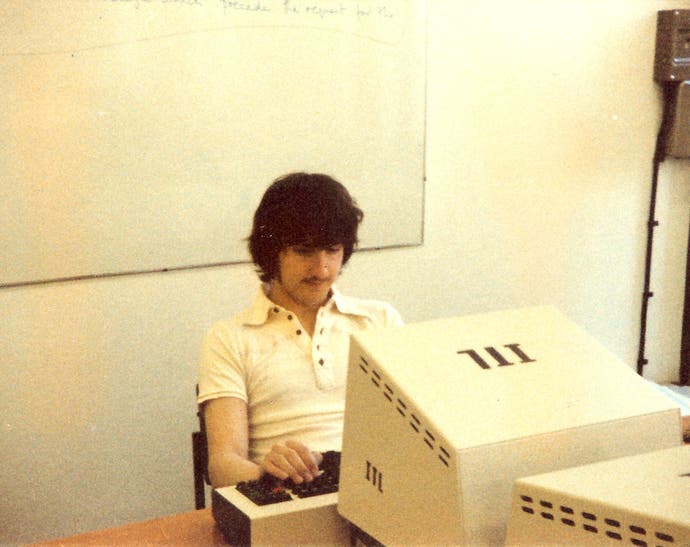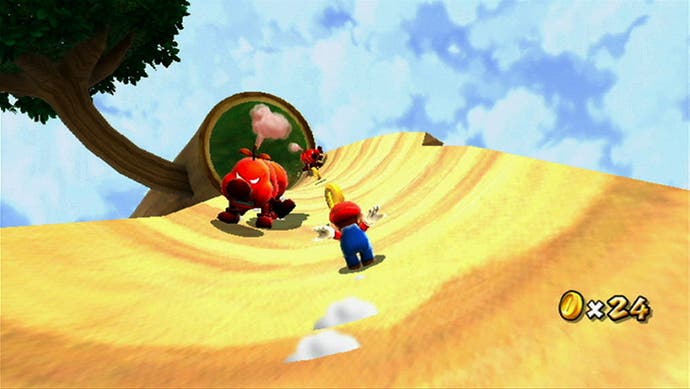Ten Unsung Gaming Heroes
The less famous names that helped define video games.
Eurogamer readers will doubtless know about Shigeru Miyamoto of Mario fame. You've probably also clocked that Peter Molyneux bloke, Will Wright and Cliff Bleszinski too. Not to mention John Carmack, Bobby Kotick and that mouthy guy from Rovio.
But for every industry 'star' who racks up games media headlines like Jordan in a bad news week there is a forgotten gaming hero. They are the pioneers and visionaries that time forgot. Instead of reaching the dizzy heights of game convention fame, they languish in obscurity even when their achievements live on.
Maybe they lacked the razor-sharp PR who spread the word, or avoided the limelight out of shyness. Maybe they were too ahead of their time for their own good or we were too busy looking forward to the next pixel thrill to notice what they had done. Whatever the reason, they shouldn't be forgotten, so let's take a moment to salute 10 gaming heroes who should be better remembered than they are.
1: Ted Dabney
When Nolan Bushnell needed help figuring out how to create the world's first commercial arcade videogame, it was Ted he turned to. Ted solved the engineering conundrums and 1971's Computer Space was born. A few months later in 1972 he and Bushnell co-founded Atari. But the following year Ted left Atari - Bushnell says he quit, Dabney says he was pushed - and beyond a few minor odd jobs, including some for Bushnell, he never worked in games again.

2: Dave Nutting
Back in the early 1970s, coin-op games didn't use microprocessors. Instead they were built out of wires and integrated circuits. Alas, these hard-wired machines tended to be flaky and fiddly to build, so in 1975 Bally asked Dave Nutting to rework Taito's Western Gun coin-op into a microprocessor-powered game. The result, Gun Fight, marked the moment that arcade game making shifted from being a hardware-engineering task to a software-development exercise - a change that opened up new possibilities for game developers. Gun Fight also inspired Western Gun's creator Tomohiro Nishikado to use a microprocessor for his next game, which became Space Invaders.
3: Jerry Lawson
Ralph Baer may have built the world's first games console - the Magnavox Odyssey - but Jerry Lawson was the man who gave us the first microprocessor and cartridge based system: the Fairchild Channel F. Released in 1976, complete with unique paddle-and-joystick-in-one controller and wood effect casing (it was law in the seventies), the Channel F panicked a cash-strapped Atari into selling up to Warner Communications so it could release its VCS 2600 console. In effect, Lawson's creation started the first proper console war, although Atari won that hands down. Sadly, Lawson had only just begun to get recognition for his work when he died in April this year.
4: Muriel Tramis
Tramis answered the tired old 'are games art' debate back in 1987 when her adventure game Méwilo explored French imperialism in the Caribbean and won a medal from Paris' department of culture for its artistic merit. Her follow-up, Freedom: Rebels in the Darkness, continued to explore her French-Caribbean heritage and delved into the taboos about France's involvement in the slave trade. After making some erotic adventures she helped create the popular Gobliiins series. She now runs a web and edutainment developer.
5: Masanobu Endo
While Endo is still making games and is fairly well known in Japan, it's his first game - the 1982 co-op Xevious - that earns him a place on this list. It looked stunning at the time, established the idea of the vertically scrolling 2D shoot-'em-up and introduced the core ideas of many of the 2D shooters that followed in its wake, such as boss encounters and predictable attack waves. Its blueprint still lurks within many of the intimidating bullet hell shooters that are still a big deal in Japan. Endo went on to create many more games, including many that never made it out of Japan, but none had the same impact as Xevious.

6: Roy Trubshaw
If you've ever fallen for an MMO, this is the guy to thank. While studying at Essex University at the tail end of the 1970s, he developed a text-based virtual world where people could hang out and explore together. He called his creation MUD, short for Multi-User Dungeon, and after his friend Richard Bartle sprinkled some Dungeons & Dragons magic over it, Trubshaw's open-source work spread across the world. Over the years, people tweaked and reinvented the MUD before it eventually evolved into the MMOs of today.
7: Eugene Provenzo Jr.
Let's be frank, Professor Eugene Provenzo Jr. isn't a popular man in the gaming industry. The Miami University academic's first study of video games concluded that 40 of 47 NES games he looked at were sexist, violent and/or racist. He later gave evidence to the US Senate supporting the introduction of age restrictions on games and is mates with firebrand anti-games campaigner Jack Thompson. So why is he on this list? Well, agree or disagree with him, he did pioneer the academic study of gaming - and that's a good thing.
8: Dani Bunten Berry
One of the faces of Electronic Arts' ill-fated early dabble with promoting game designers as rock stars, Dan Bunten - who became Dani after a sex change in 1992 - was a trailblazer for social gaming. Her creations sought to encourage people to play together at a time when online gaming was, for most, a pipedream. Her landmark 1983 release M.U.L.E. is still regarded as a master class of game design, her biggest success The Seven Cities of Gold inspired Sid Meier to create Pirates! and her 1988 real-time strategy game Modem Wars pointed to the internet-connected gaming future we now live in. But after the sex change, she was ostracized by a narrow-minded game industry and in 1998, as technology finally began to catch up with her ideas, she died of lung cancer, robbing gaming of one of its greatest talents.

9: Takashi Tezuka
Shigeru Miyamoto might get all the publicity and acclaim, but he didn't work alone and on some of his most acclaimed works, Takashi Tezuka was at his side. Tezuka was the co-creator of Super Mario Bros. and The Legend of Zelda, but while Miyamoto became the face of Nintendo, he rarely steps into the limelight. His handiwork, however, can be found in many of Nintendo's best-loved games including Super Mario Bros. 3, Super Mario World, A Link to the Past, Super Mario 64, Ocarina of Time, Animal Crossing and Pikmin. More recently he co-produced New Super Mario Bros. Wii and Super Mario Galaxy 2.
10: Tom Zito
These days, we're used to the idea of games drawing on the ideas of cinema to tell stories, but back in the late 1980s the concept of interactive movies was in its infancy and Zito was the man pushing it forward. Together with Atari co-founder Nolan Bushnell, he came up with NEMO, a console that used VHS cassettes rather than cartridges to create games based around film footage. The NEMO never made it into the shops, but Zito resurrected its games, including the infamous Night Trap, for the CD-driven multimedia era of the 1990s and ushered in the age of full-motion video games. A few years later, the arrival of 3D graphics swept aside full-motion video gaming, but Zito's basic idea of blending cinema and games lives on in titles such as Heavy Rain and L.A. Noire.

